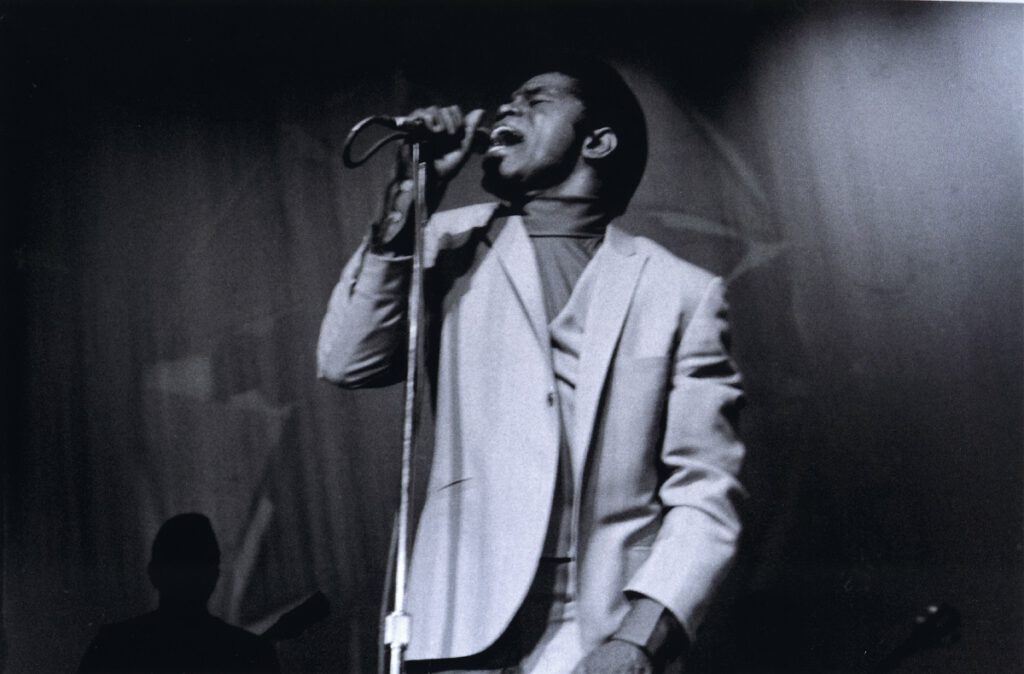It must be daunting to mount a documentary about someone as
well-known, beloved and important as James Brown. Where do you start? While his
on-stage persona is well-documented, not as much is known about his life away
from the mic, so a personal approach would work. However, Brown’s
larger-than-life performing style and how it impacted music and stage shows
could provide enough material for a documentary of its own. And then you get to
how much Brown meant to the civil rights movement and you probably call Ken
Burns and see if he can get you in touch with someone at PBS to do a 6-hour
piece. There’s so much to the Brown story that focus becomes an issue in a film
like Alex Gibney’s “Mr. Dynamite: The Rise of James Brown,” premiering Monday
night on HBO. How do you capture the hardest working man in show business in
just two hours?
Gibney makes the decision to rush the biographical aspects of
Brown’s early years, providing almost all the family history of the man over
still photos with on-screen text. The director is clearly more interested in
Brown’s on-stage personality than what he did off stage. It’s called “Mr.
Dynamite” for a reason. The rushed opening half-hour can be a bit too frenetic.
Brown’s youth, an appearance on Dinah Shore, his work with Bobby Byrd—bam, bam,
bam. The movie itself lacks a flow in these early scenes. I kept writing in my
notes, “I want more of this, and This, and THIS.”
The anecdotes pile up fast and furious, told mostly by
people who performed with Brown (back to that on-stage aspect of the film’s
focus), but also by lifelong friend Al Sharpton and the film’s producer Mick
Jagger. Brown would perform in clubs in the South where he’d have to get
dressed on the bus because blacks weren’t allowed in the dressing room. He
actually impersonated Little Richard for a few weeks because people didn’t know
what LR looked like, and one can easily see how this impersonation impacted his
stage show.
“Mr. Dynamite” finally takes its time when it gets to the
legendary T.A.M.I. Show, a 1964 concert/film event that would prove to be the
announcement of a major new talent in the world. Brown was well-known enough at
this point to earn a spot on a bill that also included The Rolling Stones and
The Beach Boys, but no one expected him to completely steal the show. The
footage of Brown from that show is some of my favorite concert footage of all
time. He’s shot out of a cannon, with a kind of manic energy that can’t be
replicated (which could be one of the reasons most people didn’t connect with the
biopic “Get On Up”…there’s only one James Brown). It’s the kind of performance
that still feels electric 50 years later. One can only imagine what it must
have been like to see it happen live. I’d love to see a whole doc about “The
T.A.M.I. Show.”
Of course, there’s still a lot of ground to cover in “Mr.
Dynamite” after that landmark show. While Gibney’s pace slows down a bit, it
still feels haphazard. It’s a documentary of episodes more than something that
builds, although that’s sometimes inherent in the biographical doc genre. It
also arguably glosses over Brown’s violent side. Sharpton mentions the claims
of domestic abuse, stating that Brown knew violence wasn’t the answer but that
he couldn’t control that side of his personality. As with most things “Mr.
Dynamite,” I just wish there was more of it.
And on a subject that one can’t really say enough about, “Mr.
Dynamite” gets to the importance of James Brown to the civil rights movement.
From the show he did to stop the riots sure to ensue on the night that MLK was
shot to the international resonance of “I’m Black and I’m Proud,” Brown was
more than a musician, he was a leader. Seeing Brown on national TV responding
to a white critic obviously patronizing him with “My ears are open, have your
eyes been open?” has cultural power decades later. In 2014, the conversation about
race could use a figure like James Brown. As Sharpton says, “He never saw himself as a hit artist. He
always saw himself as a historic figure.” Nothing could hold James Brown
back. It makes sense that one documentary just scratches the surface of his
legacy.












